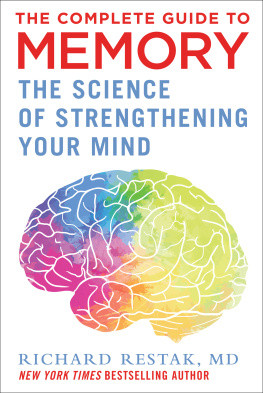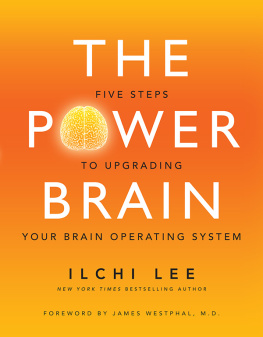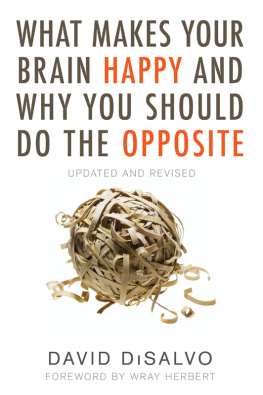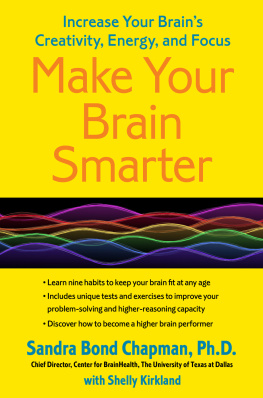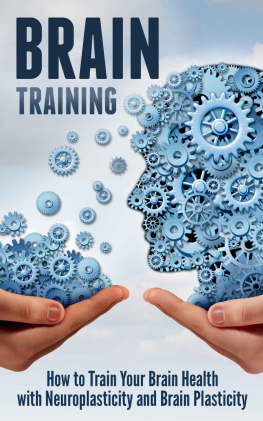FIGHTER PILOT ~
UNLEASHING
YOUR BRAINS
POTENTIAL
Abou the Author
Richard Restak, M.D., a practicing neurologist and neuropsychiatrist, is a clinical professor of neurology at George Washington University School of Medicine and Health Sciences. Born in Wilmington, Delaware, Dr. Restak went on to receive his medical degree from Georgetown University School of Medicine. He is the author of twelve previous books on the brain, including the best-selling The Brain, as well as The Mind and The Brain Has a Mind of Its Own. Dr. Restaks publications have appeared in The New York Times BookReview, the Washington Post, Smithsonian Magazine, and Sciences. He is a consultant for National Geographic magazine and an occasional commentator for National Public Radios Morning Edition, and he lectures widely on topics about mental performance and developments in brain research. Dr. Restak has three adult daughters and lives with his wife in Washington, D.C.
Resources
BOOKS
David L. Book, Problems for Puzzlebusters (Washington, D.C.: Enigmatics Press, 1992).
Ian Glynn, An Anatomy of Thought (New York: Oxford, 1999).
Gary Klein, Sources of Power: How People Make Decisions (Cambridge, Mass.: MIT Press, 1998).
Carol Krucoff and Mitchell Krucoff, Healing Moves: How to Cure, Relieve and Prevent Common Ailments with Exercise (New York: Harmony Books, 2000).
Richard Leviton, Brain Builders: A Lifelong Guide to Sharper Thinking, Better Memory, and an Age-Proof Mind (Upper Saddle River, N.J.: Prentice Hall, 1995).
Harry Lorrayne and Jerry Lucas, The Memory Book (Lanham, Mass.: Barnes & Noble Books, 1993).
Vervon Mark, M.D., with Jeffrey P. Mark, Brain Power: A Neurosurgeons Complete Program to Maintain and Enhance Brain Fitness throughout Your Life (Boston: Houghton Mifflin, 1989).
Eric McLuhan, Electric Language: Understanding the Message (New York: Buzz Books, 1998).
Snowdon Parlette, The Brain Workout: Aerobics for the Mind (New York: M. Evans, 1997).
Richard Restak, Brainscapes (New York: Hyperion, 1995).
Richard Restak, The Modular Brain (New York: Charles Scribners Sons, 1994).
Richard Restak, Mysteries of the Mind (Washington, D.C.: National Geographic, 2000).
Daniel L. Schacter, The Seven Sins of Memory (Boston: Houghton Mifflin, 2001).
Daniel M. Wegner, White Bears and Other Unwanted Thoughts: Suppression,Obsession, and the Psychology of Mental Control (New York: Viking, 1989).
GAMES
Levinger Crossword Dice (Delray Beach, Fla.: Levinger).
Nob Yoshigahara, Rush Hour Traffic Jam Puzzle (Alexandria, Va.: Binary Arts).
Marsha J. Falco, Set: The Family Game of Visual Perception (Ravensburg, Germany: Ravensburger).
Tangoes: The Ancient Chinese Puzzle Game (San Francisco: Rex Games). Visual Brainstorm (Alexandria, Va.: Binary Arts).
COMPUTER PROGRAMS
Inspiration: The Visual Thinking Tool (Portland, Oreg.: Inspiration Software, Inc.).
WORKBOOK PROGRAMS
Robert Allen, Philip Carter, and Ken Russell, Mensa Mind Games: Over 200Puzzles, Games and Exercises to Maximize Your Brainpower (London: Carlton Books, 1997).
Andi Bell, The Memory Pack: Everything You Need to Supercharge Your Memoryand Master Your Life (London: Carlton Books, 2000).
Jonathan Hancock, Memory Power: Memory-Building Skills for Everyday Situations (Hauppauge, N.Y.: Barrons, 1997).
WEBSITES
Since websites come and go, let me suggest two current favorites and, more important, an approach to obtaining the most current sites. Start with a favorite search engine (Altavista is my personal favorite) and enter brainteasers. This will bring up my personal favorites, http://www.puzz.com and http://www.puzzles.com, which features a cornucopia of challenges. After mining that source (including suggested links), enter puzzles as the search term and youll discover my second favorite, http://www.thinks.com, which includes a host of different puzzles, including some unusual ones such as puzzles by Lewis Carroll or puzzles challenging your knowledge of original illustrations and quotes from the works of Charles Dickens. Since learning and brain improvement should be fun, try out the humor site http://www.dilbert.com. Check out the daily mental workout in order to avoid the cerebral stagnation brought about by mindless meetings, endless e-mail, and re-writing reports for the boss. And for the humorous part of Dilbert, check out the puzzles designed for your bosss brain. Remember: If one site closes, another one opens, so try your favorite search engine and enter words like brainteaser, puzzle, anagram, logical challenges, and so on. Use your own imagination in order to come up with terms that will yield both language-based puzzles, such as various versions of the daily crossword (varying in difficulty), to challenges directed to the nonverbal, pictorial powers of your right hemisphere.
New in paperback
from Richard Restak, M.D.
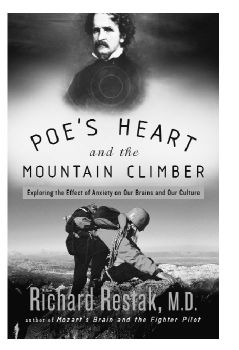
A fascinating and in-depth exploration of the
science of anxiety, from the extremes of panic attacks
and post-traumatic stress disorder to the everyday
anxieties that affect over nineteen million Americans.
Pulls seamlessly from psychology, medicine, history, and popular culture to explore anxiety from all angles and offer advice on managing it.
O, The Oprah Magazine
Poes Heart and the Mountain Climber / 1-4000-4851-6
$12.00 paper (Canada: $17.00)


Available from Three Rivers Press wherever books are sold
www.crownpublishing.com
Learn as much as possible about how your brain works.

This is the most important factor in getting smart and staying smart. In order to do this, you dont have to become a neurologist or subscribe to scholarly journals on neuroscience (the study of the brain at every operating level ranging from everyday observable behavior to brain processes taking place at the level of chemicals and molecules). Here is a useful summary of the facts you should know.
The adult human brain weighs about three pounds and consists of about 100 billion nerve cells or neurons along with an even greater number of non-neuronal cells called glia (in Greek, glia means glue) interspersed among the neurons. The neurons are responsible for the communication of information throughout the brain. Especially important is the brains outer wrinkled mantle, the cerebral cortex, which gives the brain the appearance of a gnarled walnut. The cerebral cortex contains about 30 billion neurons linked to one another by means of a million billion neuronal connections called synapses.
As pointed out by Nobel Prizewinning neuroscientist Gerald Edelman, more than 32 million years would be required to count all of the synapses in the human brain at a counting rate of one synapse per second. And if we concentrate on the number of possible neuronal connections (circuits) within the brain, we get an even more astounding number: 10 followed by a million zeros. To put that number into some kind of perspective, consider that the number of particles in the known universe comes to only 10 followed by seventy-nine zeros. Finally, consider that the glia, which exceed the number of neurons by at least a power of 10, are also believed to be capable of communication. If this is true, then the number of possible brain states exceeds even our most extravagant projections.
Next page

